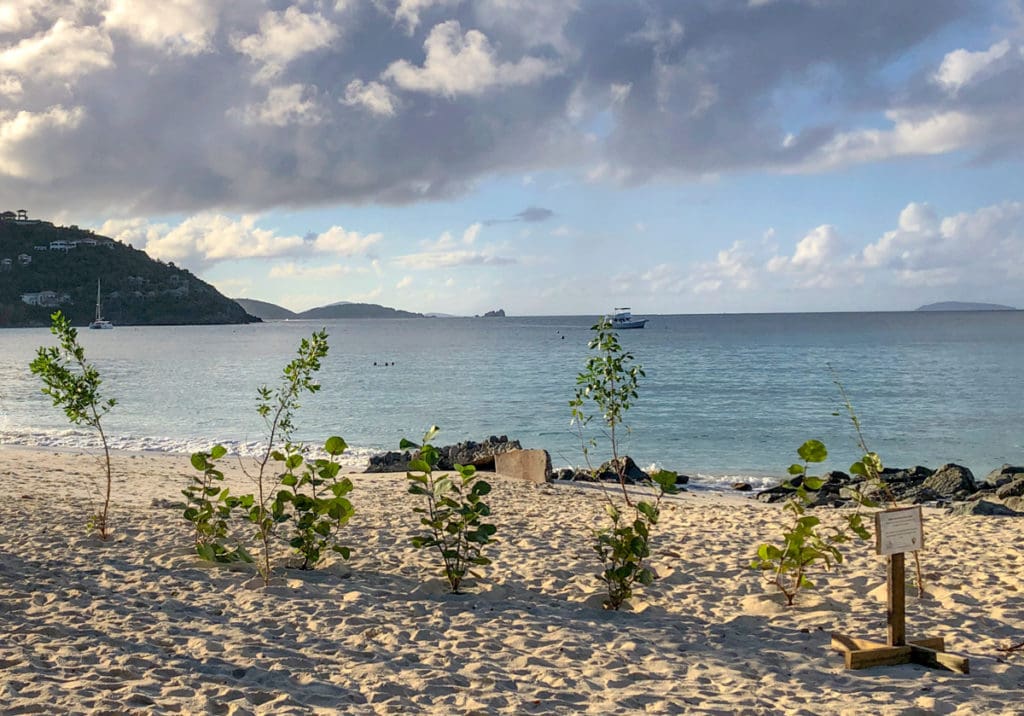
The 2017 hurricanes not only caused massive destruction of homes, infrastructure and livelihoods, but also did tremendous damage to Virgin Islands beaches and shorelines. The powerful winds and storm surges uprooted coastal trees, drove seawater inland, and swept away much of the sand and vegetation. Now they are getting some targeted assistance for long-term recovery.
For beachgoers, the most noticeable change after the storms was the loss of shade from trees growing along the beaches. The tropical sun can be brutal, and shelter is essential.
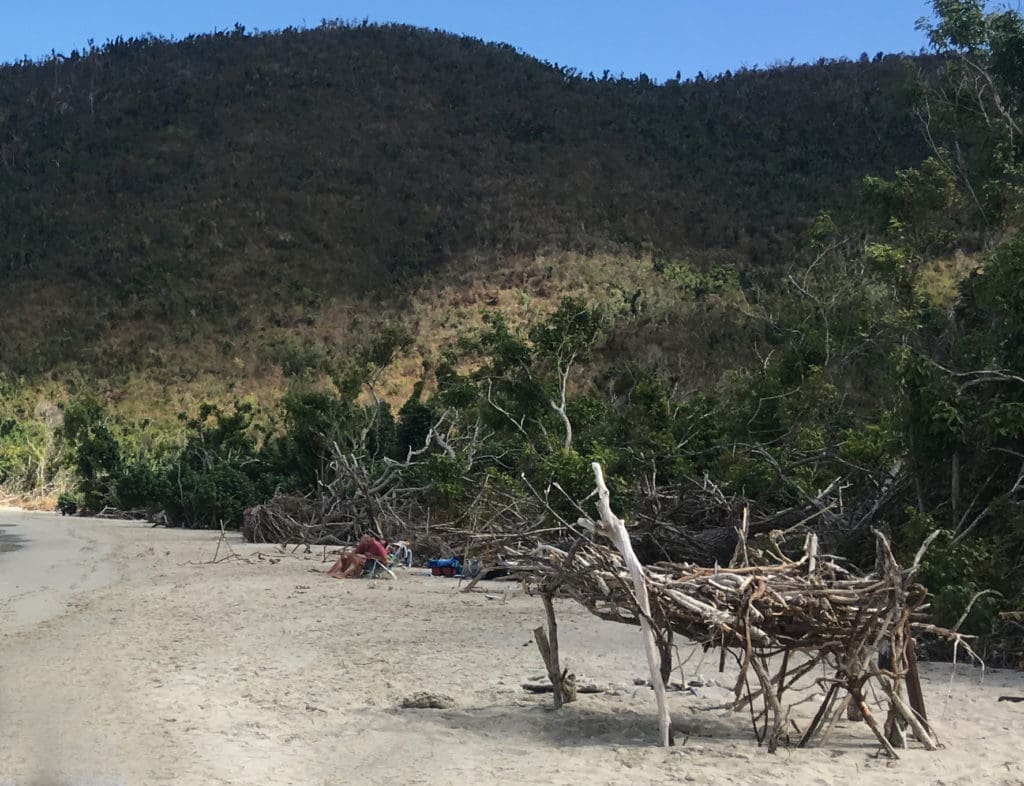
But trees do more than provide welcome shade. They also stabilize the shoreline, so the beaches are not washed away entirely, leaving bare, rocky shorelines. And they also support local birds, bees and animals.
In April 2019, the Unitarian Universalist Fellowship of St. John sponsored an assessment of the impacts of the storms on the island’s trees, landscapes and wildlife, which recommended replanting the most severely hit coastal areas using native trees.
One of the authors of that assessment, local horticulturalist Eleanor Gibney, quickly began propagating salt-tolerant native trees suitable for beach areas. She is currently collaborating with the Virgin Islands National Park on a multi-year replanting project, with funding from the Friends of the Virgin Island National Park.
The need for stabilizing tree roots has become more critical as sea levels are rising and storms are becoming more intense due to increased ocean temperatures. At the same time, coral reefs are being degraded due to the warmer water (which can lead to the death of the tiny organisms living inside the hard structures we see). Coral reefs also face additional threats from pollution, diseases, and invasive species.
As a result of coral damage, the reefs along the beaches are providing less protection from battering waves and storm surges. In some areas, beach erosion has already led to losses of historical structures and artifacts along the shorelines, and special care has to be taken during the replanting process to protect remaining archeological materials.
A life-long St. John resident living on a beachfront, Eleanor Gibney was deeply impacted by Hurricanes Irma and Maria. As she wrote in the 2019 assessment report: “… the natural environment, once so seemingly permanent, dramatically changed overnight … landslides, beach erosion and the loss of the extensive coconut groves are starkly apparent and may seem like open wounds….
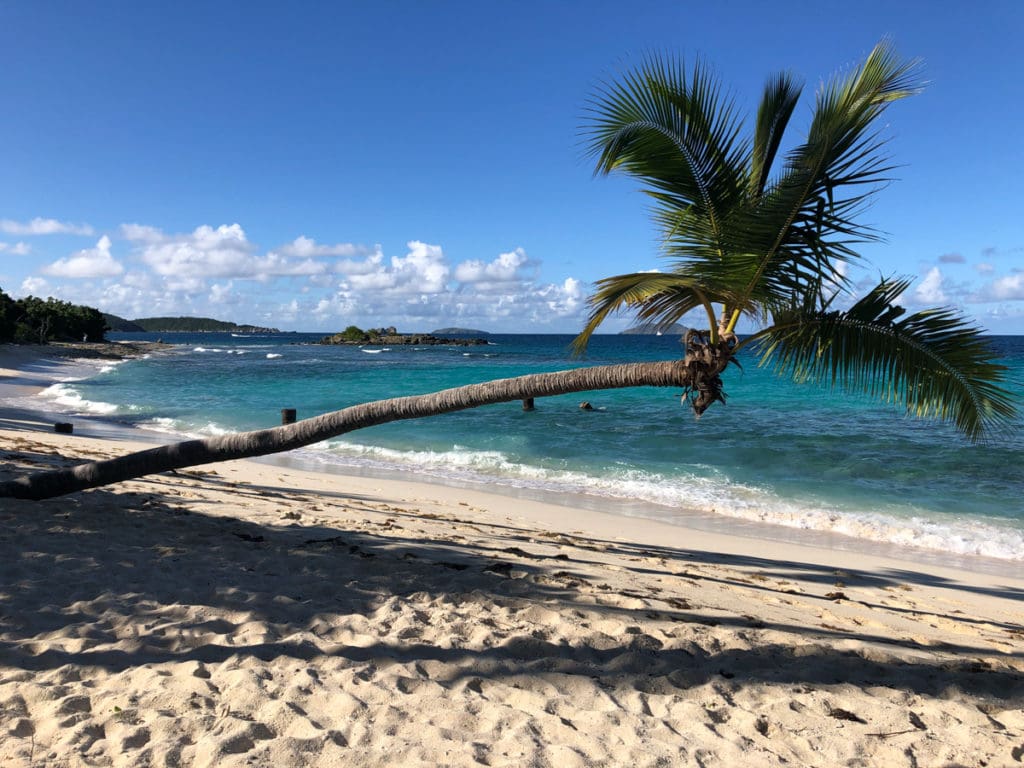
Many coconut palm trees planted by Eleanor Gibney’s parents were among the ones washed away by the storms. However, she concluded that those are not the best trees to replant in order to stabilize the beaches. Their root systems are dense and compact and do not extend very far beyond the tree trunks. As a result, they are easily toppled as the sandy soil is shifted around them. Another reason not to plant them right on the beach is that their dense root balls can cause problems for turtles trying to dig nests in the sand near the trees.
Native sea grape trees (Coccoloba uvifera) are a better choice for coastal restoration. They are durable, salt-tolerant, fast-growing and drought-resistant. They put down some deeper roots as well as lateral ones, and large sea grape trees can also provide desirable shade.
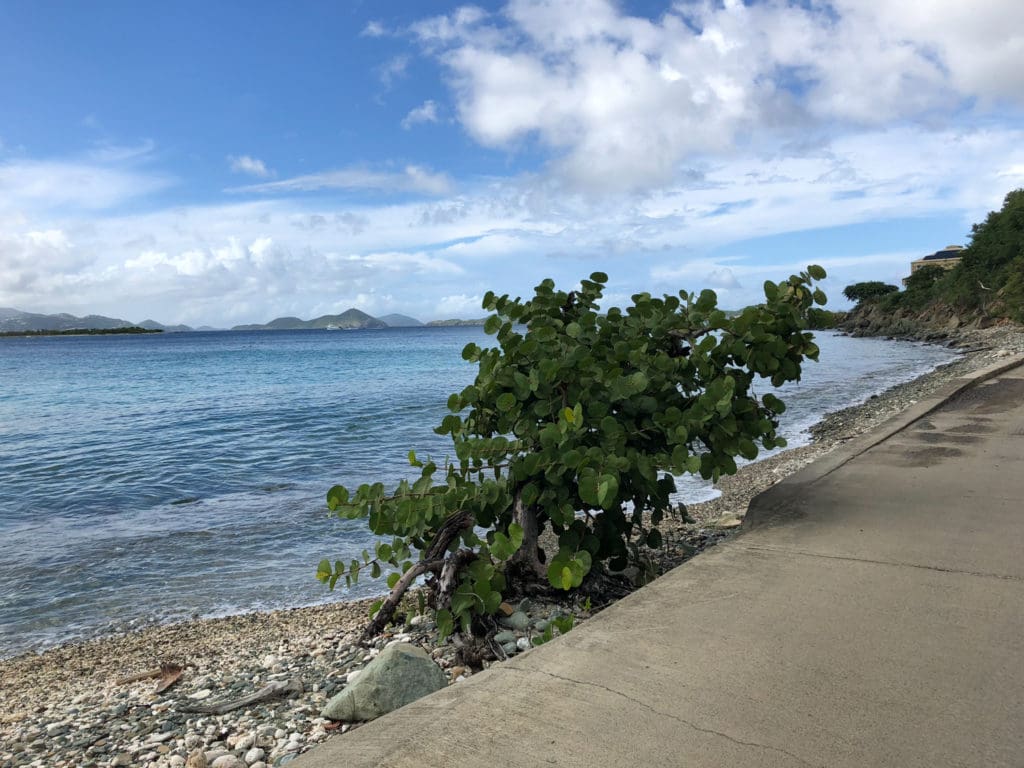
The newly planted trees need some protection, though. Unfortunately, deer and donkeys like to munch on the seedlings. In addition, they have to contend with invasive pests, like stem borers, brought in on landscaping trees imported from South Florida nurseries.
Sea grapes are not commonly viewed as good for eating but are quite tasty if you get ones that are fully ripe, just as they are ready to fall off the tree. At that point, they are a deep purple color. Before they are ripe, they have a sharp tannic taste.
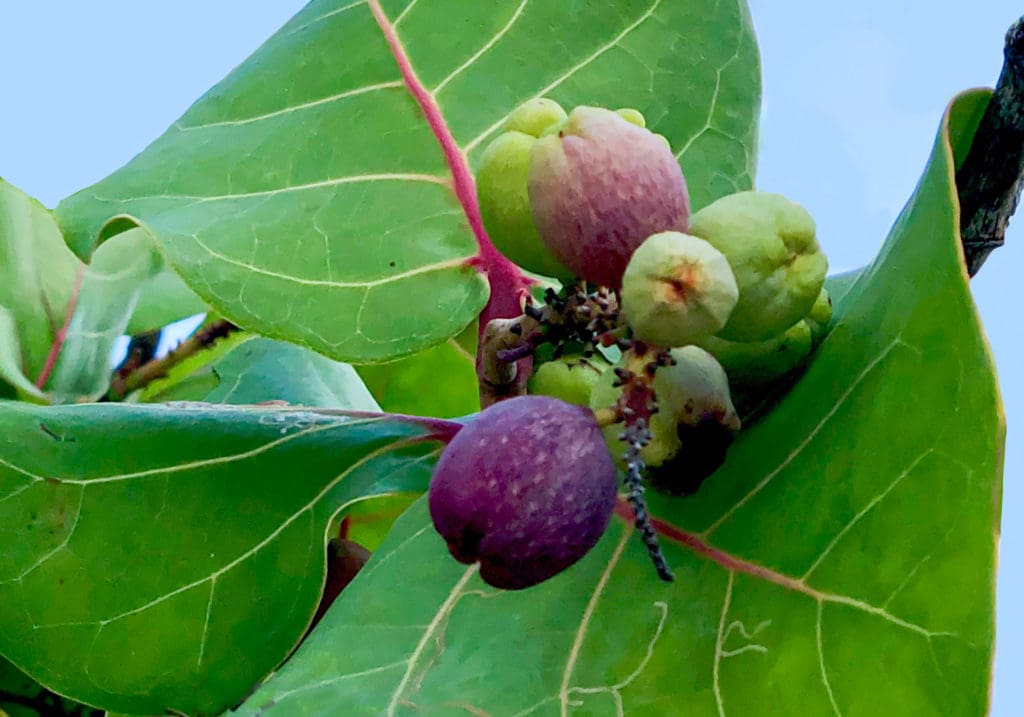
Buttonwoods (Conocarpus erectus) are other tenacious native trees that can grow successfully in salty areas. They are usually found along shorelines or in brackish mangrove wetlands. They can grow tall, and their trunks often look tough and sinewy when they are subjected to constant coastal winds.
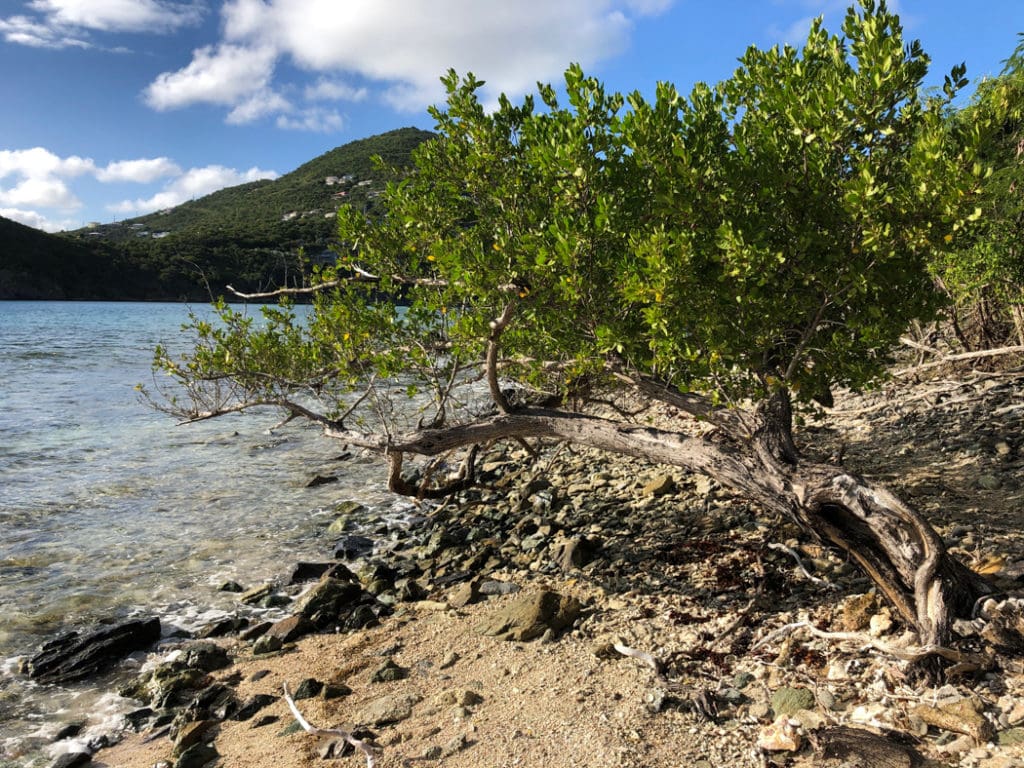
Buttonwood trees produce clusters that look like brownish raspberries but are actually dry and hard, and not edible.

Although the sea grape and buttonwood trees are best for planting in the sand, the project expects to add other native trees behind them, a bit further back from the shoreline.
Many people miss the rows of lovely coconut palms along the beaches. They are not being replanted in the VI National Park because they are not native, although over the years they have become naturalized here. For the most part, they do not fit into the romantic narrative of being carried naturally across the ocean by wind and tides to wash up on these shores. Most were brought by people and deliberately planted – because they are fun and attractive, and coconuts are good to eat.
It would be great for people to also plant more coconut palm trees, but it is best if they are placed further back from the beach, where they are more protected from storm surges and shifting sands, and don’t deter the nesting turtles.
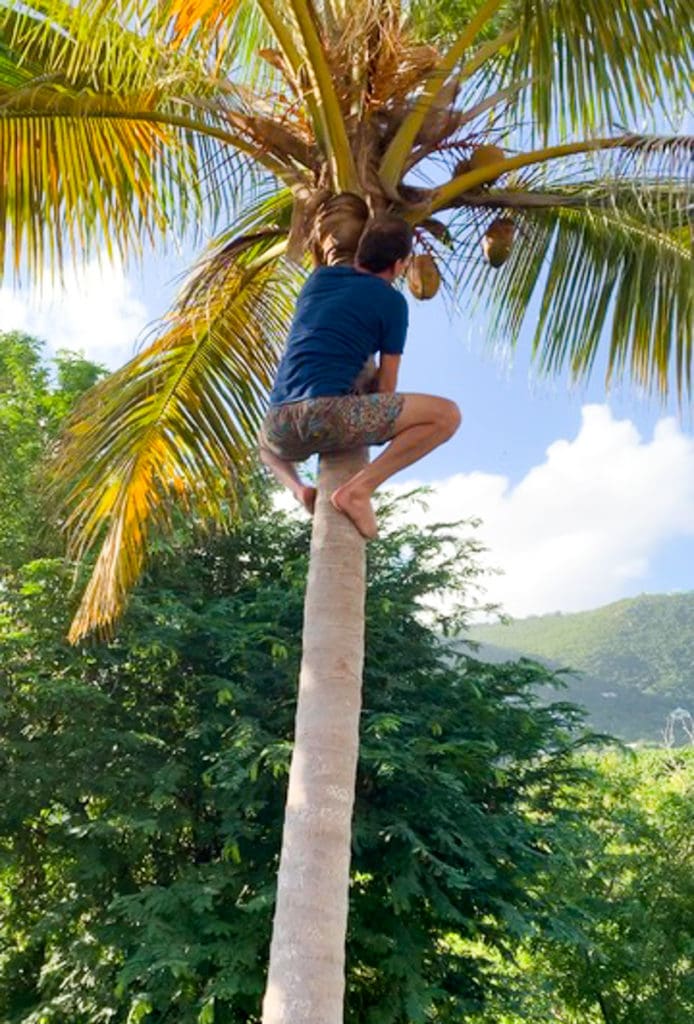
Gail Karlsson is an environmental lawyer, writer and photographer – author of The Wild Life in an Island House, plus the guide book Learning About Trees and Plants – A Project of the Unitarian Universalist Fellowship of St. John. See uufstjohn.com/treeproject and gvkarlsson.blogspot.com. Follow her on Instagram @gailkarlsson.





